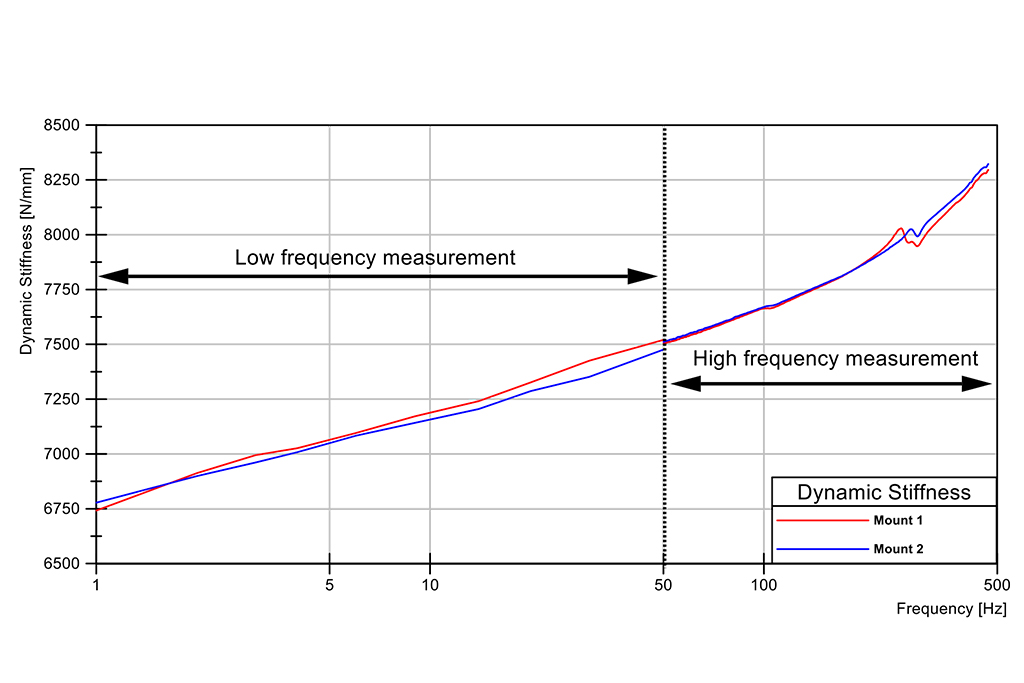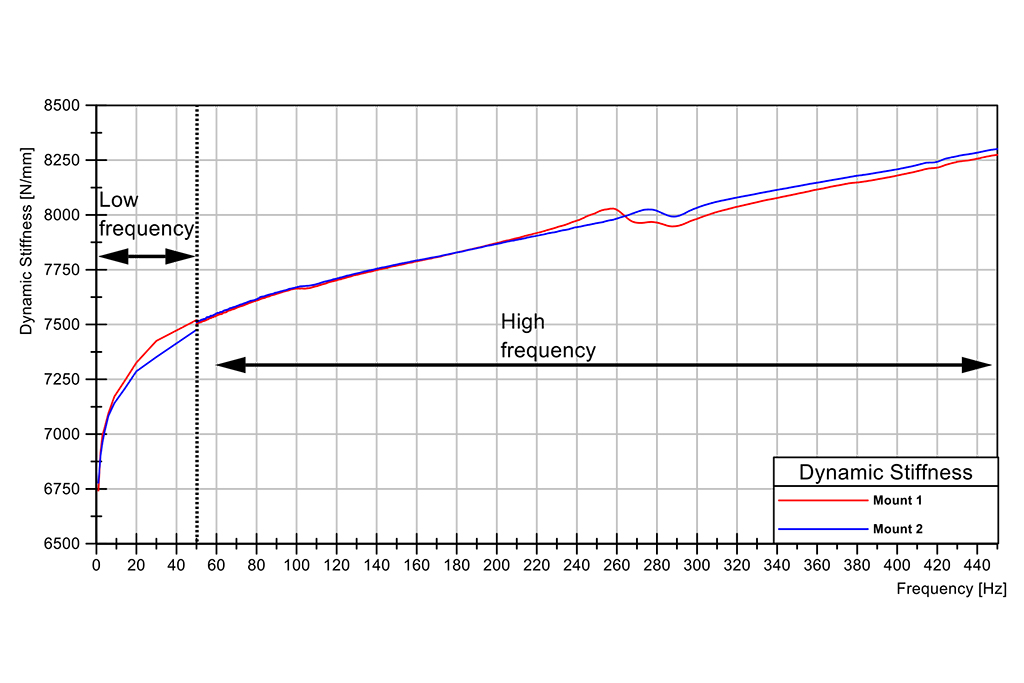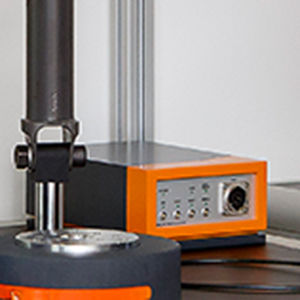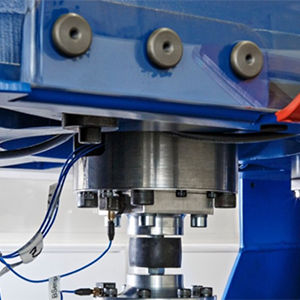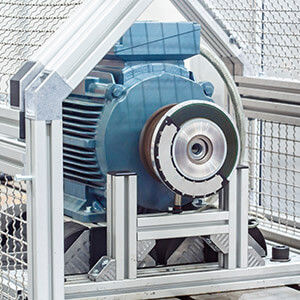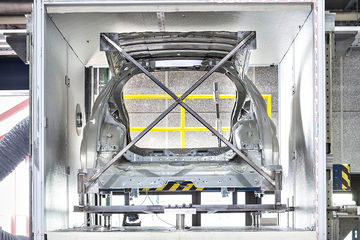Characterization of Elastomer Components in the field of Structural Durability and NVH.
CHARACTERIZATION, Dynamic Stiffness, RUBBER METAL, Force-Displacement Characteristics
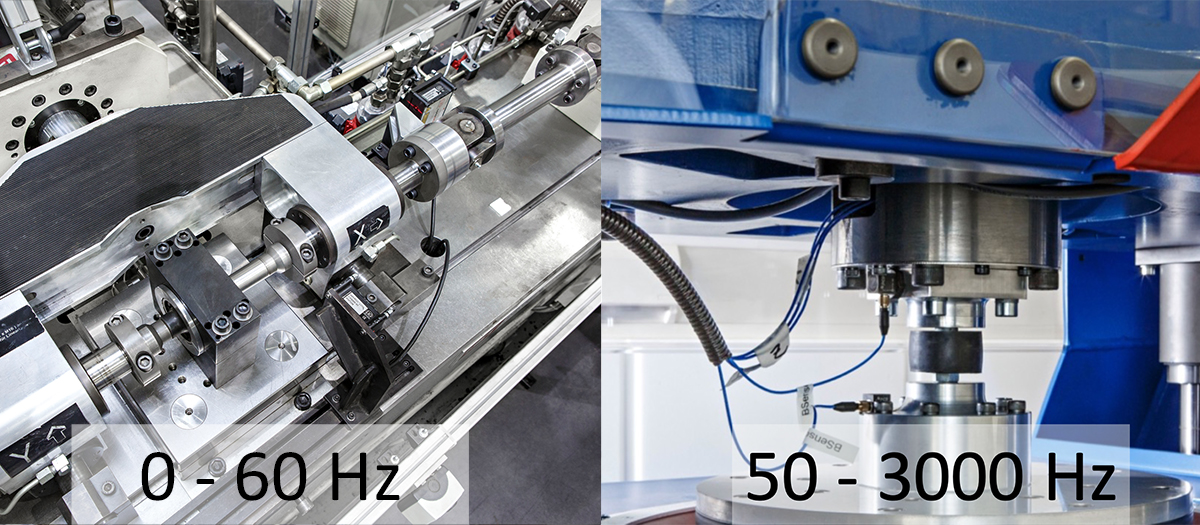
One of the main applications of elastomers in the vehicle sector is in chassis or engine mounts. These components have to fulfill diverse requirements in two different but overlapping frequency ranges. The absorption of dynamic strain amplitudes from driving maneuvers or the powertrain is the focal point of structural durability in the low-frequency range (0 to 60 Hz), whereas the optimization of the vibration characteristics and acoustics is observed in the high-frequency range (from 50 to 3000 Hz). The merging of both frequency ranges is becoming increasingly significant in the development process. Fraunhofer LBF carries out the characterization for the entire frequency range.
Requirements of technical elastomers
Numerical simulation models for technical elastomers are normally used for a specific frequency range, but have to be capable of generating valid results in the adjacent frequency ranges too. This applies in the case of simulations crossing multiple domains in particular. Furthermore, component manufacturers are often required to experimentally inspect or even prove the OEM demands on the components from the quasi-static behavior through the acoustic range. Both these application tasks require the representation of the quasi-static behavior as well as a component characterization across an extremely broad frequency spectrum up to the acoustic range, i.e. from 0 to approx. 3000 Hz. The testing therefore places extremely high demands on the experimental characterizations with regard to the allowable eigenfrequency of the test rig as well as the relevant amplitude and frequency range.
Experimental simulations for a broad frequency spectrum from a single source
At Fraunhofer LBF, two fundamentally different test rig designs are used as a standard for the low-frequency and high-frequency application range in order to carry out the characterization. This distribution ensures that a very high level of measurement accuracy is achieved in the two specialist domains. Test benches on the market which typically cover a range from 0 to 800 Hz usually constitute a compromise between measurement accuracy and maximum measurable frequency.
The quasi-static force-displacement behavior (incl. hysteresis) as well as the frequency range up to 60 Hz is covered on servo-hydraulic testing machines. Typical features of those machines are rigid test set-ups which are able to represent the proper deformation of the component being studied without an overlapping deformation of the remaining load path of the test-rig. Even extremely stiff elastomer mounts with high stress amplitudes can therefore be studied. The characterization from 50 to 3000 Hz is performed on a electrodynamic high-frequency test rig. Special feature is the eigenfrequency of less than 50 Hz. In order to ensure a continuous dynamic measurement from 50 to 3000 Hz the design of the test fixture (adaption specimen is attached to) is optimized by a modal analyses.
The main advantage of using two diverse testing machines designs is an entire frequency spectrum with high accuracy. Due to the overlapping frequency range a validation can be perfomed. Figure 1 and 2 show the dynamical stiffness of two elastomer mounts with the same geometry from a low and high frequency characterization. Comparing the two testing machines only a very low variation in the results can be seen. Based on experiences, the variation is less than 3%.
Significant influencing factors
Besides the standard characterization of the components, Fraunhofer LBF offers the possibility of inspecting various influencing factors such as temperature and excitation amplitudes as well as preloading. In addition, the components are typically pre-conditioned in order to take into account the setting behavior during the initial cycles. Insofar as technically possible, synergies in the adaption can be harnessed to yield significant savings potentials. In a variety of projects with our customers in industry, this methodology enabled the characterization of frequency ranges crossing multiple domains as well as the analysis of specific influencing factors. We thereby provide our customers with efficient characterizations for various domains from a single source and, based on our many years of experience, offer comprehensive consultation in the generation of test requirements.

“Due to the determined characteristics within a broad frequency range and simulations models developed and parameterized based on these, we can provide customized support for the structurally durable and acoustic assessment of elastomer mounts.” Timo Sandkühler, M. Eng.
Contact
- Timo Sandkühler, M. Eng.
- Phone: +49 6151 705-563
- timo.sandkuehler@lbf.fraunhofer.de
- Dipl.-Ing. Marco Jackel
- Phone: +49 6151 705-8274
- marco.jackel@lbf.fraunhofer.de
